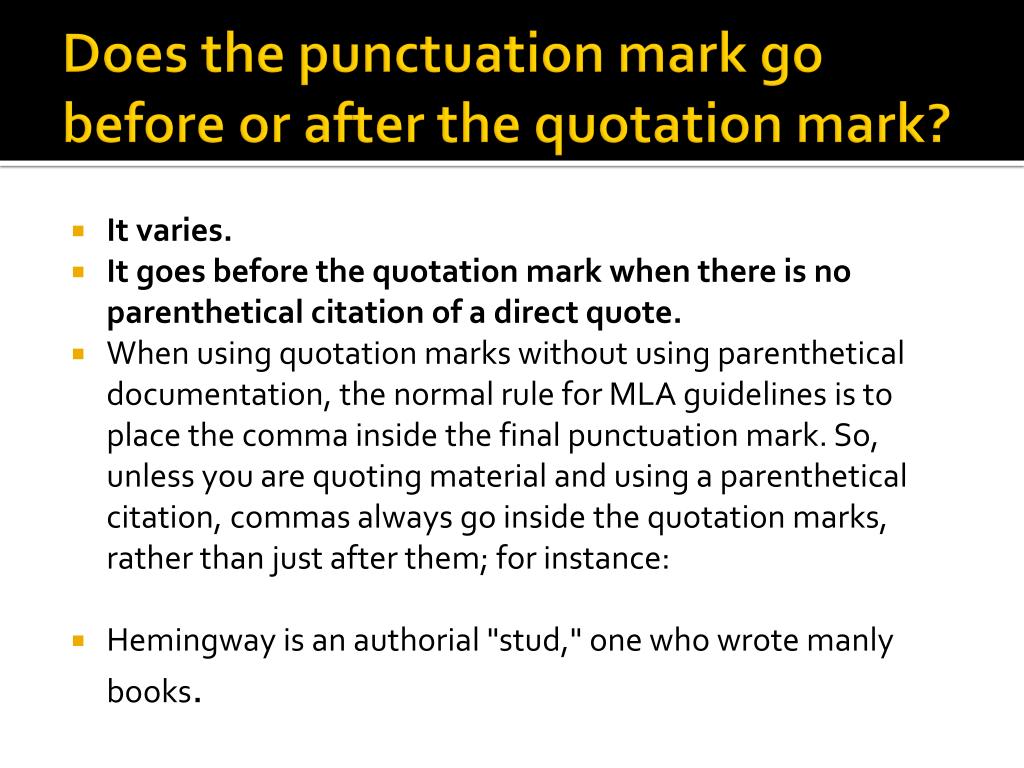


(e.g.) articles, essays, chapters, poems, webpages, songs, and speeches are placed in quotation marks.Place titles in quotation marks for short-form works and works contained within a larger work.

(e.g.) books, plays, films, periodicals, databases, and websites.Italicize the title of long-form works, works that are self-contained and independent of other sources, as well as works that contain other works.

Introduce subtitles after title with a colon followed by a space.Capitalize the first word, last word, and all principal words including those that follow hyphens in compound terms.Write titles in title-style capitalization.General Guidelines for Styling Titles in MLA These guidelines, have been followed in developing this guide, including the following examples. Instead, a universal set of general guidelines for citation and documentation that can be applied to any source type are outlined. The MLA Handbook does not provide strict instructions on how to format citations for specific types of sources. “Happiness involves a form of orientation,” writes the feminist critic Sara Ahmed, continuing that “the very hope for happiness means we get directed in specific ways, as happiness is assumed to follow from some life choices and not others” (54). Tyson began to investigate how feminine and masculine bodies (and work) were policed as presenters of history and how criticisms were often rooted in “notions of historical authenticity” (54). A quotation may be broken up by your own words to emphasize or clarify meaning.Īccording to Naomi Baron, reading is “just half of literacy.Quotations can be located at the beginning, middle, or end of your sentence.Quotations might be words or phrases instead of complete sentences.Any sentence punctuation goes after the closing parenthesis of the citation. Integrate it into your text and enclose within double quotation marks. If a prose quotation extends no more than four lines in your paper and needs no distinction, consider it as a short quotation.


 0 kommentar(er)
0 kommentar(er)
